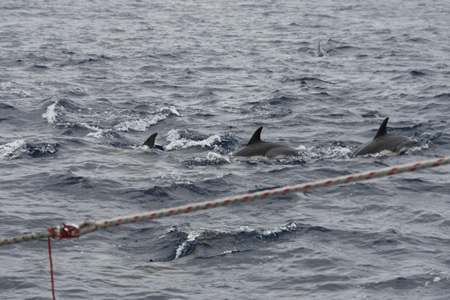These bulletin blogs represent news about Finavon and the South Esk, and my views as a riparian owner. They are not the views of any other organisation, nor are they designed to promote the interests of any individual or organisation other than Finavon Castle Water and factors affecting the fishery. Tony Andrews
News from the radio tagging project is that there are three new fish recorded, one for the South Esk, one for the North Esk and one for the Tay.
The total fish tagged last week was 12, bringing the total tagged since February to 125, and the number subsequently recorded to 27 (21.6%).
Totals recorded for the 4 Rivers are:
South Esk: 17
North Esk: 6
Tay: 4
Dee: 0
There has been some movement of tagged salmon within the South Esk, with fish moving from Bridge of Dun upriver towards Brechin.
I think it is fair to suggest at this late stage in May that the spring run in 2012 appears to be less numerous than in 2011, but that the condition of these early running MSW salmon has been generally excellent. Therefore it may be reasonable to claim that some, perhaps even a majority, of spring salmon are getting access to good feeding at sea. The attrition of numbers of returning adult fish therefore is not simply a lack of food. There are clearly other factors at work, and it is on these unknown aspects of the salmon’s life that ocean pelagic surveys need to gather more data.
FCW caught and returned three more silver salmon (to 11lbs) last week, of which one was sea liced.
This sea liced salmon of 9lbs was caught and returned in Tyndals Pool (Milton Beat) on a bitterly cold evening on 19 May. In a year of rather disappointing numbers of salmon caught, the condition of this fish was normal for MSW salmon caught in the first three months of the season.
TA


